|
|
This newsletter is a summary of recent ESO Science Announcement items. Follow the links or visit ESO Science Announcements to read more.

|
08 Jul 2014: Applications for research fellowships at ESO supported by the European Union Marie SkЉВodowska-Curie Individual Fellowship scheme are invited. The duration of the fellowships is 12-24 months and they are available to experienced researchers (> 4 years research experience) wishing to advance their career in the stimulating research atmosphere at ESO, subject to eligibility criteria. Application must first be made to ESO and, when accepted, an application is subsequently made to the EU. Full details can be found here. The deadline for the application to ESO is 11 August 2014, and 11 September 2014 for the EU application.
|
|
| Read more
|
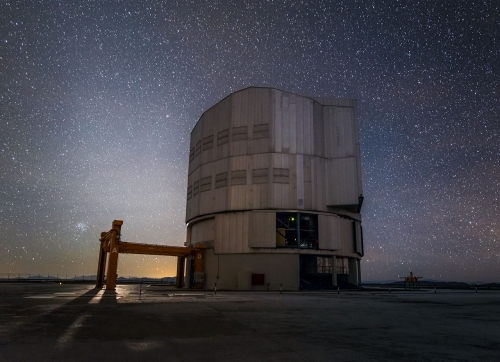
|
04 Jul 2014: The 94th Observing Programmes Committee met on 19тАУ22 May 2014. A total of 1170.8 (8-hour equivalent) nights of visitor and service mode observations have been allocated on the VLT, VISTA, VST, the 3.6-metre, NTT and APEX telescopes.
|
|
| Read more
|
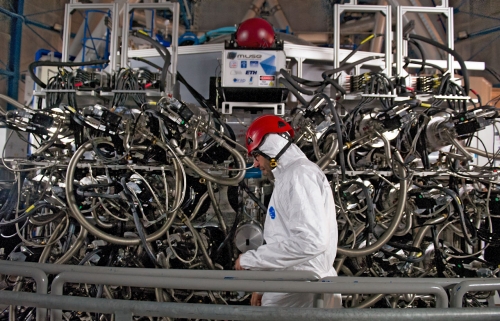
|
02 Jul 2014: Of the 86 proposals submitted for the Science Verification (SV) of MUSE, a total of 49 proposals were allocated. The MUSE SV observations ran from 20тАУ29 June 2014 and were executed in service mode by a dedicated team, although not all programmes have been completed. Additional SV time is currently under consideration for scheduling in August.
|
|
| Read more
|
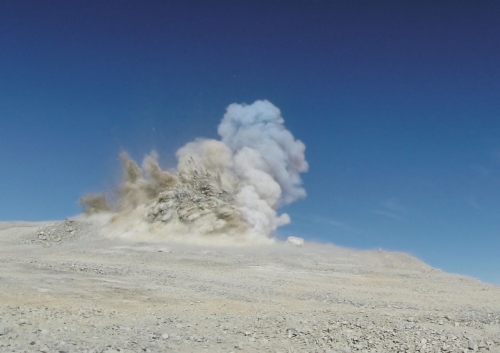
|
01 Jul 2014: The European Extremely Large Telescope (E-ELT) groundbreaking ceremony took place on 19 June 2014. Part of the summit of the 3060-metre high Cerro Armazones was blasted in the first stage of levelling for the construction of the platform for the E-ELT dome. Full details can be found in the Release. Preparation of the site also includes laying of a paved road and construction of a service trench and will last about 14 months.
|
|
| Read more
|
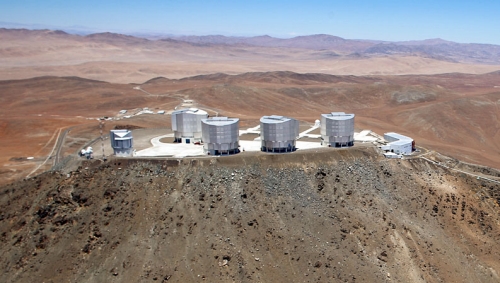
|
30 Jun 2014: A vacancy has arisen for a support astronomer based at the Paranal Observatory, with up to 105 duty nights per year. Support astronomers contribute to visitor and service mode observing, instrument calibration and data quality assessment; they work in collaboration with one or more instrument teams. Paranal operations astronomers actively conduct astronomical research. Further details can be found on the ESO Recruitment portal; the deadline for application is 31 July 2014.
|
|
| Read more
|
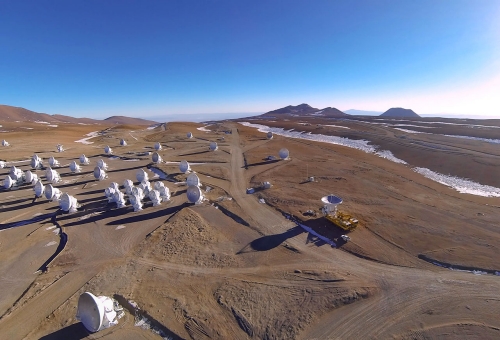
|
24 Jun 2014: The ALMA Cycle 1 Early Science observing season ended in May 2014. As of 3 June, a total of 36 of the 198 High Priority (HP) projects (including Director's Discretionary Time) have been completed and delivered to the Principal Investigators. The unobserved components of the remaining 146 HP projects have been transferred to Cycle 2 where they will be executed in parallel with the Cycle 2 approved programme (see the Cycle 2 announcement).
|
|
| Read more
|
Upcoming ESO or ESO-Related Workshops
- Clustering Measurements of Active Galactic Nuclei
ESO Headquarters, Garching, Germany, 14тАУ18 July 2014Galaxies and active galactic nuclei (AGN) are not randomly distributed in the Universe. The distribution of AGN, measured by clustering, enables new insights into the physical conditions that govern the accretion onto supermassive black holes and AGN clustering can provide constraints on cosmological parameters. AGN clustering measurements have gained significant interest in the last decade and upcoming large surveys will generate samples with several million objects. These surveys offer the unique opportunity to study AGN and galaxy co-evolution, AGN physics, and cosmology with AGN clustering measurements.
This ESO workshop, which will be the first ever dedicated workshop to AGN clustering, aims to summarize our current understanding of AGN clustering and how the community should prepare for upcoming datasets and challenges. More details are available on the workshop web page, or by email. Registration remains open.
- RASPUTIN: Resolved And unresolved Stellar PopUlaTIoNs
ESO Headquarters, Garching, Germany, 13тАУ17 October 2014The study of stellar populations is one of the most relevant diagnostics to constrain galaxy formation and evolution. Quantitative analyses of the stellar content of galaxies pave the way to 'convert' starlight into physical quantities like stellar masses, chemical abundances and star formation rates, and to trace the evolution and chemical enrichment history of galaxies.
The main goal of this workshop is to share observations, models, techniques and recent results on galaxy evolution. Particular emphasis will be given to the current limitations affecting the intrinsic degeneracy of the multi-dimensional parameter space and to possible solutions to build a more unified and coherent picture of galaxy evolution.The impact of the E-ELT and its first generation of instruments on studies of resolved and unresolved stellar populations will also be discussed. More details are available here or by email. The registration and abstract deadline are 12 September 2014.
- HIRES 2014: Astronomy at High Angular Resolution тАУ A Cross-disciplinary Approach
ESO Headquarters, Garching, Germany, 24тАУ28 November 2014Recent years have seen a huge development in high-resolution techniques such as direct methods (e.g., adaptive optics, lucky imaging), interferometry (including speckle imaging and spectro-astrometry) and reconstruction methods (astrotomography). This workshop aims to bring together the different communities working in these fields increasing the synergies among them. A variety of imaging and spectroscopic techniques will be covered, applied to a range of astronomical targets from planets, stellar discs, stellar surfaces, binary stars and active galactic nuclei. Current and future instrumentation for high angular resolution will also be featured. Sessions will be organised by science topic, with a review followed by observational results and technical talks on the methods. There will be ample time for contributed talks and discussions, and space for posters.
More detailed information is available on the workshop webpage or by e-mail. The abstract submission deadline is 22 August and the registration deadline 24 October 2014.
- Revolution in Astronomy with ALMA тАУ The 3rd Year тАУ
Tokyo International Forum, Tokyo, Japan, 8тАУ11 December 2014The Atacama Large Millimeter/submillimeter Array (ALMA) has been producing a growing number of impressive and transformational science results as the most powerful mm/submm interferometer in the world. Held in central Tokyo, the aim of this workshop is to highlight the science results from ALMA obtained during the first three years of science operations. The science topics include all fields of astronomy: cosmology and galaxies in the distant Universe; nearby galaxies and the Galactic Centre; the interstellar medium and star formation in our own Galaxy; astrochemistry, circumstellar disks, exoplanets and the Solar System; stellar evolution and solar physics; and fundamental physics.
This four day workshop will feature invited and contributed talks, poster sessions and an optional full day excursion. Young researchers and students are particularly encouraged to attend the meeting. The final registration deadline is 15 October 2014 and more details are available from the conference website.
|
|
|
|
|
|
|
|